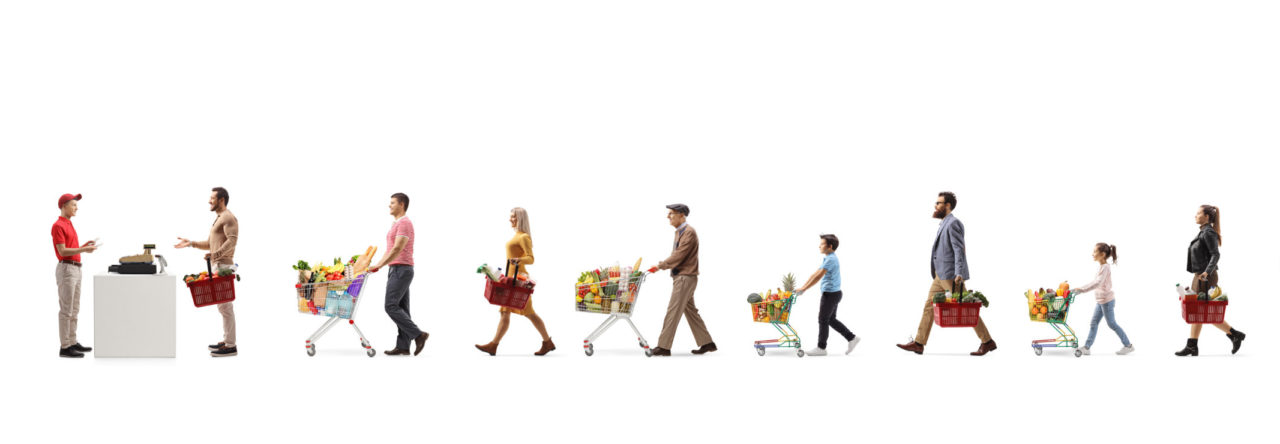
#92: There are no new crimes, only new victims.
Stolen credit cards, fraudulent checks, grab and run, smash and grab, concealing merchandise in clothes or bags, hiding in the store until after closing, burglary, robbery—virtually all thefts and frauds are just repetitions of security breeches that happen every day in stores all over the world.
Internal crime includes little innovation as well: pocketing receipts; hiding merchandise in bags, briefcases, and clothing; removing merchandise before or after hours; concealing merchandise in outgoing trash; shipping merchandise to oneself or friends; submitting bogus invoices and receipts for reimbursement; writing checks to oneself; colluding with a vendor for kickbacks; exaggerating payroll hours ….
Fortunately crime isn’t creative—just persistent. And so must be retail security.

#93: Opportunity makes the thief.
Few crimes are the result of criminal premeditation. Circumstances create them—someone simply notices that merchandise is unguarded, the system has holes, or no one is paying attention.
A little (expensive) experience allows us to spot most crimes before they’re committed. We can predict shoplifting from display locations, expense account abuse from reimbursement requirements, inventory theft from handling procedures, embezzlement from accounting processes, ….

#94: Crime prevention is a routine.
Heading off most crimes isn’t difficult: keep sales floors attended; check customer IDs for checks and credit cards; remove expensive merchandise from display windows overnight; get merchandise off the dock quickly; display expensive items away from doors and within visibility; use clear trash bags and check the dumpster periodically; limit keys and change locks regularly; review bank statements and checks monthly; do sample audits regularly; ask questions to demonstrate attention, etc.

#96: The best clue is the sale is too easy.
Even the smartest of crooks rarely imitate real customers well. They know too little about the merchandise, don’t ask the right questions, spend too little time selecting, and aren’t concerned with pricing—they buy too easily.
Purchases of high-priced items by phone, especially from outside our normal market areas, should always be suspect, as should sending a courier to pick up items.
Commissioned salespeople are easy targets for these tactics because they want to believe the sale is legitimate. (Getting credit card approval or bank check verification doesn’t mean it won’t be returned later as fraudulent—approval means only that there’s enough room on the card or money in the account, not that the person using it is its owner.)

#97: Security cameras are better prevention than proof.
Security cameras are improving in quality, affordability, and recording time, but their effectiveness in retail security is still more perception than reality.
When cameras are placed conspicuously they deter robberies and burglaries, as well as head off shoplifting.
But their usefulness in solving crimes is limited. Even when we can review the crime in action, the picture is usually too small and fuzzy to identify perpetrators, read license plates, or prove the details. The video is just a souvenir of our loss.

#99: “Justice” doesn’t mean for the victim.
Courts are focused on punishment of the criminal, not compensation of the victim. Prosecution requires making a case, showing up in court (sometimes multiple times), and a great deal of waiting time. Even when restitution is mandated, it seldom makes up for our lost time and trouble.
Our most effective use of the justice system is often only as a threat to recover our merchandise or money. Then we can get back to making a living.

#100: Prevention beats prosecution.
Catching a crook isn’t really crime solution; it’s the beginning of a long and painful process. The legal system is slow, frustrating, and inefficient, and often renders disappointing results.
Will we feel better seeing a perpetrator get his due? A few hours sitting outside the courtroom dampens our satisfaction. Will the world be better off with a crook off the street? He’s one of millions in a continually replenished hoard.
Better to focus on retail security, discourage criminals from committing their crimes in our stores, and let the police catch them—somewhere else.
Previous: Design & Display
Next: Inventory Management
Retail Truths is available in print and Kindle at Amazon.com
